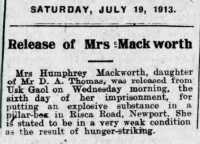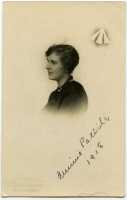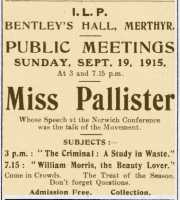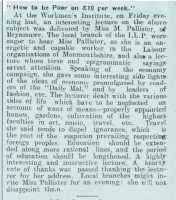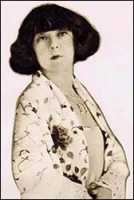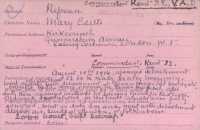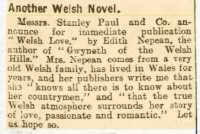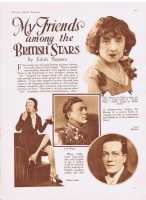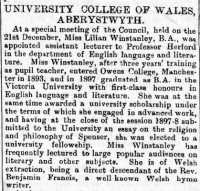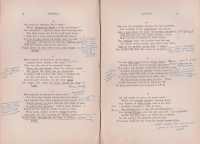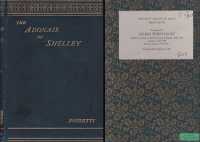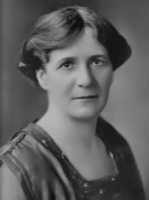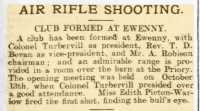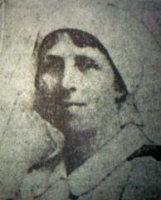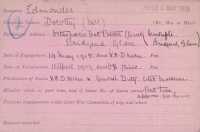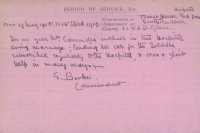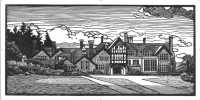Browse the collection
Sorted by date of death
Margaret Haig Thomas (Mrs/Lady Mackworth, Lady Rhondda)
Place of birth: London
Service: Suffragette, business woman, Commissioner and Controller, editor and publisher, Women’s National Service Department, Ministry of
Death: 1958/07/20, London, Cause not known
Notes: Margaret Haig Thomas, born 1883, was the only child of D.A.Thomas MP, first Viscount Rhondda, and his wife Sybil. The family home was in Llanwern. The family were supporters of women’s suffrage, and Margaret joined the WSPU in Newport in 1909, becoming increasingly militant. In June 1913 she spent six days in Usk Gaol following an attempt to burn out a pillar box in Newport. She strongly supported the war, but did not follow Emmeline and Christabel Pankhurst’s extreme jingoism. After working on behalf of Belgian refugees in the early months of the war, she was travelling to New York in the Lusitania, with her father, when it was hit by a German torpedo and sunk on 7th May 1915. Margaret and her father both survived, though she was unconscious in the water for over two hours. [click on the link for her account recorded in 1950 http://www.bbc.co.uk/programmes/p02qvqwp ]. In 1916 she began work for the Ministry of National Service in Wales, and London, becoming Commissioner of Women’s National Service in Wales and Monmouthshire early in 1917, particularly charged with encouraging girls and women into agriculture. Soon she was also heavily recruiting young women for the WAAC, particularly those qualified to work as army clerks in France. Women were also needed for the newly formed WRNS and WRAF. In February 1918 she was appointed Chief Controller of the Women’s Section of the Ministry of National Service.rnOn the death of her father in 1918 Margaret inherited the title of Lady Rhondda. She continued in business and public life for many years after the war.rn
Sources: Angela V John Turning the Tide’, Parthian Books 2013 http://www.bbc.co.uk/programmes/p02qvqwp
Reference: WaW0257
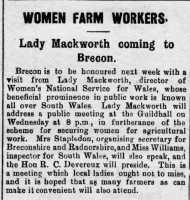
Newspaper advertisement
Advertisement for a meeting in Brecon to be addressed by Lady Mackworth. Brecon County Times 12th April 1917
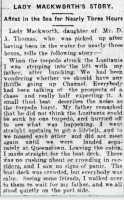
Newspaper report
First section of a long report of Lady Mackworth’s experiences in the sinking of the Lusitania. Cambrian Daily Leader 10th May 1915. For full account go to http://newspapers.library.wales/search?alt=full_text%3A%22Lady%22+AND+full_text%3A%22Mackworth%22&range%5Bmin%5D=1915-1-01T00%3A00%3A00Z&range%5Bmax%5D=1915-12-31T00%3A00%3A00Z&page=5
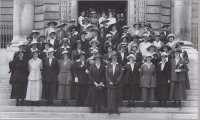
Photograph of WAAC clerks
Photograph of newly recruited WAAC clerks on the steps of the Law Courts, Cardiff, June 1917. They are about to leave for France. Margaret Mackworth is front right
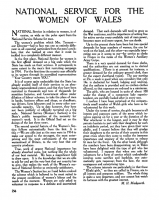
Welsh Outlook
Margaret Mackworth’s article on National Service for Welsh women, in the periodical Welsh Outlook, vol 4, no 7, July 1917.
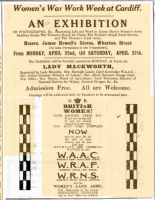
Newspaper advertisement
Advertisement for Women’s War Work Week exhibition, held at Howells department store, Cardiff, April 1918.
Minnie Pallister
Place of birth: Kilkhampton, Cornwall
Service: Teacher, activist, writer
Death: 1960, Cause not known
Notes: Minnie Pallister was born in Cornwall in 1885, and was educated at Cardiff university, after which she became a teacher in Bryn Mawr. She was elected president of the Monmouthshire Federation of the Independent Labour Party just before the outbreak of War in 1914. She was renowned as a speaker on peace and the Labour movement, and was the national organiser in Wales of the No Conscription Fellowship. She was also an accomplished pianist, accompanying the Brynmawr Ladies Choral Society and others in fund-raising concerts for the Red Cross.
Reference: WaW0230

Newspaper report
Report of Minnie Pallister’s appointment as Monmouthshire ILP President, Llais Llafur 1st August 1914
Mary Edith Nepean (née Bellis)
Place of birth: Llandudno
Service: Novelist, artist, columnist, VAD Commandant, VAD, 1914 - 1919
Death: 1960, Llandudno ?, Cause not known
Memorial: St Tudnos Church, Llandudno, Caernarfon
Notes: Edith Nepean was born in 1876; her father John Bellis was Overseer of the Poor in Llandudno. She was a talented artist, winning a silver medal at the National Eisteddfod in Caernarfon, 1894, as well as painting and literary prizes at local eisteddfodau. She married Molyneux Edward Nepean in 1899 and moved to SE England. In 1914 she was appointed Commandant of the Folkestone Detachment of the Red Cross, a post she held until 1919. She published her first romantic novel, ‘Gwyneth of the Welsh Hills’ in 1917. This was turned into a silent film in 1921. This was followed by ‘Welsh Love’ and many other similar titles. She also wrote for contemporary film magazines.
Sources: https://womenandsilentbritishcinema.wordpress.com/the-women/edith-nepean\r\n http://historypoints.org/index.php?page=grave-of-mary-edith-nepean
Reference: WaW0269
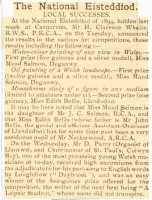
Newspaper report
Report of Edith Bellis’s success in the 1894 Eisteddfod. The Weekly News and Visitors Chronicle 20th July 1894
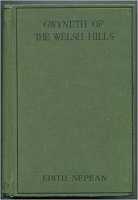
Gwyneth of the Welsh Hills
Edith’s first novel, Gwyneth of the Welsh Hills. Lloyd George is said to have encouraged her writing.
Lilian Winstanley
Place of birth: Manchester, suffragist
Service: Lecturer, University College Aberystwyth / Coleg Prifysgol A, 1898 - 1941
Death: 1960, Cause not known
Notes: Lilian Winstanley was an outstanding student at Owen’s College, Manchester, one of the constituent parts of Victoria University. She was a suffragist and keen cyclist as a student, graduating with a 1st class degree in 1897. In 1898 she moved to Aberystwyth with a companion, Marion Benson [d. 1900], to join the English Department of University College, Aberystwyth as an assistant lecturer. Lilian remained there until she retired as a senior lecturer in 1941. She maintained her interest in Suffrage (lecturing for example to the WSPU in Preston, Lancs, in 1908), was a member of the University Socialist Society and later the Liberal Party and wrote regularly for The Welsh Gazette and Welsh Outlook, including verse. She wrote and edited many academic books and at least one novel. She left her library to the University on her death in 1960.
Reference: WaW0454
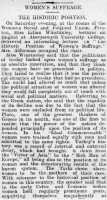
Newspaper report
Report of Lilian Winstanley’s talk to the WSPU in Preston. Welsh Gazette 16th January 1908.
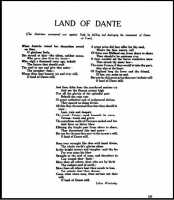
Poem
Poem ‘Land of Dante’, reflecting on the Austrian invasion of Italy. Welsh Outlook Vol 2 no 9 September 1915.
Edith Picton Turbervill
Place of birth: Fownhope, Herefordshire
Service: Welfare worker, MP, Y W C A
Death: 1960, Cause not known
Notes: Edith (born 1872) was a twin [qv Beatrice Picton-Warlow], one of many children of John Picton Turbervill who inherited Ewenny Priory, Glamorgan in 1891. Always very devout, she worked with the families of navvies working on the Vale of Glamorgan railway and poor families in London After six years in India she returned to Britain to be foreign secretary of the Y.W.C.A. When war broke out, she raised quarter of a million pounds to build Y.W.C.A. hostels for young women munitions and farm workers. A strong supporter of ordination of women, she preached in several non-conformist chapels in Wales before becoming the first woman to preach in an Anglican church, in 1919, wearing ‘cassock and surplice’. As she was over six foot tall, with ‘a rather loud voice’, she impressed the newspapers. In that year too she joined the Labour party. After two unsuccessful attempts, she was elected MP for Wrekin in Shropshire in 1929. During her brief Parliamentary career she successfully introduced the bill to stop the execution of pregnant women.
Sources: Angela V John: Rocking the Boat, Parthian Press 2018
Reference: WaW0442
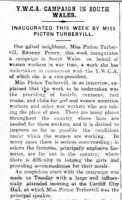
Newspaper report
Report of the inaugural meeting launching the provision of Y.M.C.A. hostels for munitions workers in Wales (part 1). Glamorgan Gazette 13 October 1916.
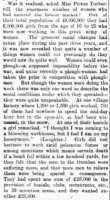
Newspaper report
Report of the inaugural meeting launching the provision of Y.M.C.A. hostels for munitions workers in Wales (part 2). Glamorgan Gazette 13 October 1916.
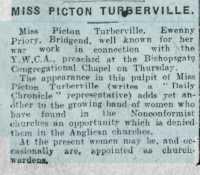
Newspaper report
Report of Edith Picton Turbervill preaching in the Bishopsgate Congregational Chapel. Cambrian Daily Leader 14th February 1919.
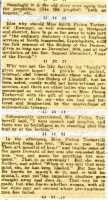
Newspaper report
‘Small Talk’ column describing Edith Picton Turbervill preaching at a regular Church of England service in North Somercotes, Lincs. Glamorgan Gazette 11th July 1919.
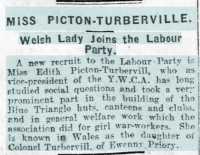
Newspaper report
Report of Edith Picton Turbervill joining the Labour Party. Cambria Daily Leader 18th January 1919
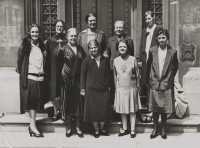
Photograph
The Labour women MPs elected in 1929, Edith Picton Turbervill is centre back. Front right is a very young Jennie Lee, later married to Aneurin Bevan. Aged 24, she was too young to vote, but not too young to stand. Next to her is Ellen Wilkinson.
Mildred Lloyd Hughes
Place of birth: Lampeter
Service: Nurse, QARNNS
Death: 1962, Wirral, Cause not known
Notes: Mildred Hughes was a professional nurse, born in 1879. She was already a QARNNS sister in 1911, and at the outbreak of war was Superintending Sister at the Royal Naval Hospital, Gibraltar, where she had been since 1912. In 1916 she became Head Sister (i.e. Matron) of Plymouth Naval Hospital, from where she wrote a letter to the parents of VAD Maggie Evans on Maggie’s death [qv]. She remained at Plymouth until she was appointed head of QARNNS in 1929. She retired in 1934. She received the Royal Red Cross in 1916, and a second award in 1919.
Sources: http://1914-1918.invisionzone.com/forums/index.php?/topic/158399-mildred-lloyd-hughes-qarnns/
Reference: WaW0252

Citation
Presentation of bar to Royal Red Cross by King George V, British Journal of Nursing 6th December 1919
Jane Edwards
Place of birth: Taicynhaeaf
Service: Munitions worker
Death: 1962, Dolgellau, Cause not known
Notes: Jane Edwards worked in a Liverpool munitions factory, though it is not known which of the many factories there. Family tradition via her nephew says that her hair went yellow from the effect of the powder. Thanks to J T Jones.
Reference: WaW0352
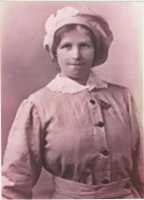
Jane Edwards
Jane Edwards in munitions uniform. Her tunic shows a triangular war-workers badge. Photograph from J T Jones, Bala.
Minna Amelia Benner (née MacFarlane)
Place of birth: Scotland
Service: Doctor, 1914 - 1934
Death: 1962, Hertfordshire, Cause not known
Notes: Minna Benner was one of the first women to qualify as a doctor at Glasgow University, in 1897. After some years in Ireland, working as an assistant MoH, she moved to Newport in 1914 as Assistant Schools Medical Officer. In 1917 she became Newport’s first medical officer for the Maternity and Child Welfare Scheme. She had a particular interest in nutrition of children (a paper she gave on the subject was published in Perspectives in Public Health in 1924), and was a feminist interested in social reform. She lived to be 99.
Sources: British Medical Journal, Who’s Who in Newport 1920
Reference: WaW0408
Dorothy Caroline Edmondes (née Nicholl)
Place of birth: Usk
Service: Nurse, masseur, VAD
Death: 1963, Cause not known
Notes: Dorothy was born in 1871, daughter of a landowning family in Merthyr Mawr. Her husband, Major Charles Edmondes, died in 1911. She joined the VAD in 1915 as a nurse, but had at some stage trained in massage (physiotherapy). In 1917 she set up an outpatient orthopaedic clinic at the Red Cross Hospital in Bridgend, at which she was head masseuse, a post she held until 1922. She was awarded an OBE in that year ‘for work among the wounded and ex-service men in Bridgend’. Dorothy Edmondes stood as a Conservative candidate for Ogmore in the 1922 general election.
Reference: WaW0296
Margaret Sidney Davies
Place of birth: Llandinam
Service: Collector, philanthropist, canteen worker, French Red Cross, 1917 - 1919
Death: 1963, Cause not known
Notes: Margaret, born 1884, was the younger sister of Gwendoline [qv] and granddaughter of David Davies the coal owner and builder of Barry Docks. She, her sister and her brother David each received one third of his vast fortune on the death of their father in 1898. All three were strict Calvinistic Methodists, with a strong philanthropic streak. The two sisters began to travel widely, and to study art in Europe. Margaret also studied drawing and printmaking. In their early twenties they were beginning to form the collection that is now at the National Museum Wales. In March 1913 the collection was exhibited, anonymously, in Cardiff; the sisters covering all of the cost. There were 26000 visitors. At the outbreak of war the sisters promoted a scheme to invite Belgian artists and musicians to come to Wales, and settle in Aberystwyth and Llanidloes. In 1917 Margaret joined Gwendoline at the Cantine des Dames Anglais, now sited at Troyes railway station. In her diary she wrote that the chief blessings in a canteen were ‘a tap of water and a gramophone. The former makes life bearable for us and the latter makes life bearable to the poilu’ (private soldier). For a while she and Gwendoline were moved to an American canteen nearer the front; there they experienced air raids and two of their colleagues were killed by bombs. In the winter of 1918-1919 she worked for three months in a canteen in Rouen organised by the Scottish Churches before returning to Wales. Later Margaret helped set up the centre for the arts at Gregynog. She continued to collect paintings, usually by modern British artists, until the late 1950s. Her collection, like her sister’s, was bequeathed to the National Museum of Wales.
Sources: Oliver Fairclough [ed] Things of Beauty: What two sisters did for Wales. National Museum Wales 2007. Trevor Fishlock A Gift of Sunlight. Gomer 2014\r\nhttps://museum.wales/articles/2007-07-29/The-Davies-Sisters-during-the-First-World-War/
Reference: WaW0334
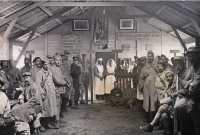
Cantine des Dames Anglaises
Margaret Davies is the figure on the right, at the back of the Cantine des Dames Anglaises.

